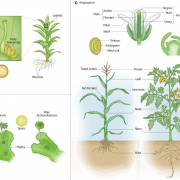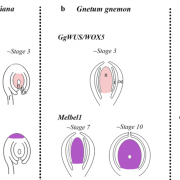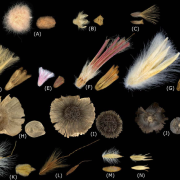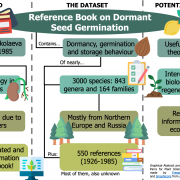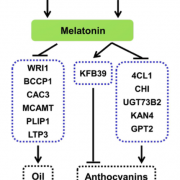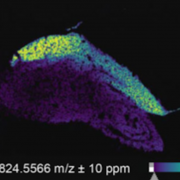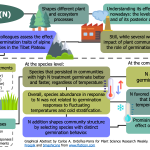Comparative analyses of extreme dry seed thermotolerance in five Cactaceae species (Environ. Exp. Bot.)
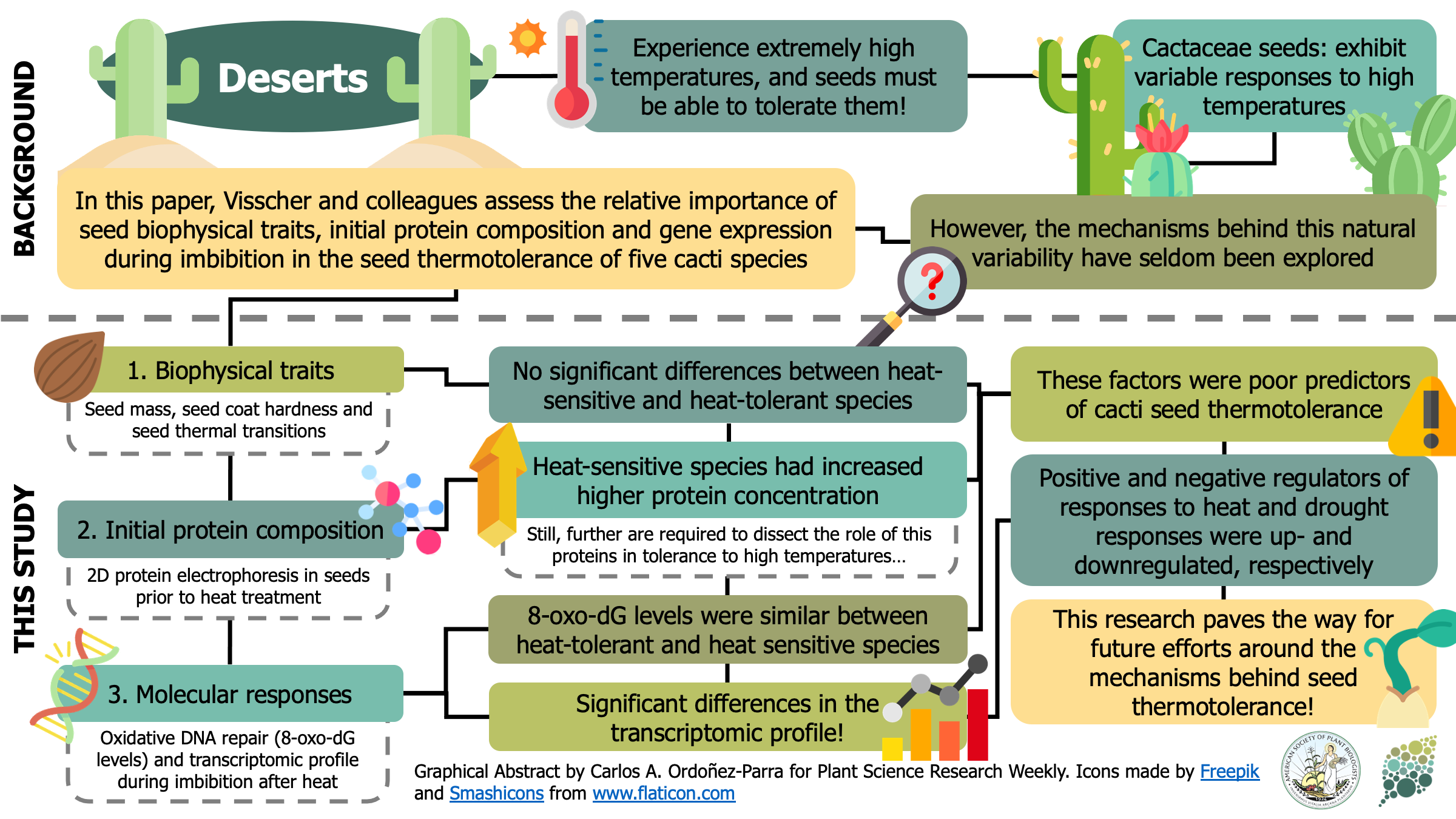 Desert plants must produce seeds that can withstand incredibly high temperatures. Nevertheless, different species of cacti –one of the most emblematic plant groups of these ecosystems– exhibit variable responses to extreme temperatures. In this fascinating paper, Visscher and colleagues conduct a thorough characterization of the seeds of five Cactaceae species with variable thermotolerance to assess the potential contribution of different traits and molecular processes to this variation. Biophysical traits (i.e., seed mass, seed coat hardness and glass transition patterns) and initial protein concentration were poor predictors of seed thermotolerance. Moreover, the levels of 8-oxo-2′-deoxyguanosine (an enzyme involved in oxidative DNA damage repair) were statistically similar between heat-sensitive and heat-tolerant species exposed to heat. As a result, these properties and processes seem to have minor contributions to seed thermotolerance. To further address the molecular underpinnings of thermotolerance, the authors carried out a transcriptomic analysis of seeds that were heat-treated when dry, with RNA isolated following imbibition. Notably, heat-tolerant species had higher levels of positive regulators of heat tolerance (e.g., HSPs and HSFA1) and drought tolerance (CAMTA1 and ADH1). Moreover, they show lower levels of negative regulators of these responses, such as RNP1 and ZAT12. As a result, this study paves the way for future efforts around the mechanisms underpinning extreme seed thermotolerance. (Summary by Carlos A. Ordóñez-Parra @caordonezparra) Environ. Exp. Bot. 10.1016/j.envexpbot.2021.104514
Desert plants must produce seeds that can withstand incredibly high temperatures. Nevertheless, different species of cacti –one of the most emblematic plant groups of these ecosystems– exhibit variable responses to extreme temperatures. In this fascinating paper, Visscher and colleagues conduct a thorough characterization of the seeds of five Cactaceae species with variable thermotolerance to assess the potential contribution of different traits and molecular processes to this variation. Biophysical traits (i.e., seed mass, seed coat hardness and glass transition patterns) and initial protein concentration were poor predictors of seed thermotolerance. Moreover, the levels of 8-oxo-2′-deoxyguanosine (an enzyme involved in oxidative DNA damage repair) were statistically similar between heat-sensitive and heat-tolerant species exposed to heat. As a result, these properties and processes seem to have minor contributions to seed thermotolerance. To further address the molecular underpinnings of thermotolerance, the authors carried out a transcriptomic analysis of seeds that were heat-treated when dry, with RNA isolated following imbibition. Notably, heat-tolerant species had higher levels of positive regulators of heat tolerance (e.g., HSPs and HSFA1) and drought tolerance (CAMTA1 and ADH1). Moreover, they show lower levels of negative regulators of these responses, such as RNP1 and ZAT12. As a result, this study paves the way for future efforts around the mechanisms underpinning extreme seed thermotolerance. (Summary by Carlos A. Ordóñez-Parra @caordonezparra) Environ. Exp. Bot. 10.1016/j.envexpbot.2021.104514


